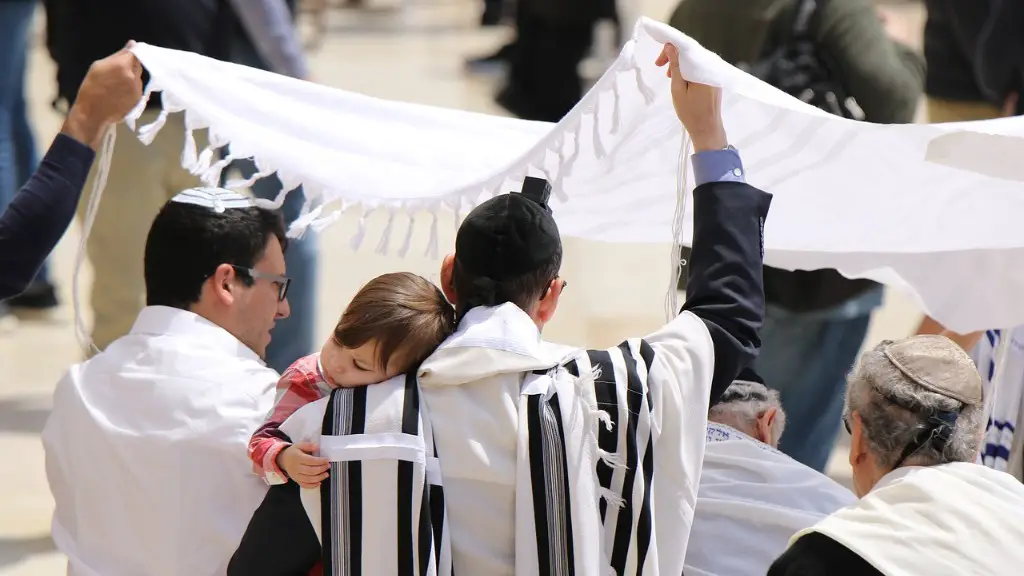What Is The Difference Between Orthodox And Reform Judaism
The two major branches of the Jewish faith, Orthodox and Reform Judaism, provide a lot of confusion to both religious and non-religious people alike. Both are based on the same ancient material, however, they differ in outlook and practices, and so understanding the difference between the two may be helpful to those who find themselves caught in-between.
At its core, Orthodox Judaism believes in maintaining traditional observance as set out in Jewish law and set beliefs, while Reform Judaism seeks to adapt, modernise and innovate in order to accommodate today’s changing world and values. There are also other streams of Judaism embraced, including conservative, reconstructionist and renewal.
According to Professor of Study of Judaism, Rabbi David J. Zucker, “A major difference between the two main branches of modern Judaism is the emphasis on authority and the source of religious authority. Orthodox Jews follow the Talmud, a collection of records of rabbinic discussions, as their guide for correct interpretations of Jewish law. Reform Jews look for guidance in terms of history, culture, and ethical values rather than formally prescribed religious law.”
The divided opinions are apparent from the variations of clothing observed as ‘religious clothing’ (or lacked thereof). Orthodox men often wear a skullcap, known as a kippah, while some Reform Jewish men may choose to wear a kippah and some may not. Orthodox Jews in many denominations also cling to traditional gender roles. In the Orthodox world, a wife is home with the children, while the husband works in order to provide for the family. The Reform Judaism holds that both parties should work, and encourages wife to work outside of the home, while advocating for both parties to be invested in raising the children.
In terms of intermarriage, Reform Judaism is far more accepting than Orthodox Judaism, with the Reform movement affirming their commitment to interfaith families. However, the ‘Orthodox’ branches still generally condemn a Jew marrying a person from another faith.
In terms of religious practice, one of the main defining guidelines for Orthodox Jews, is the adherence to Jewish dietary laws, agreed upon thousands of years ago. These, known as Kosher laws, observe several restrictions, such as the prohibition of eating pork and shellfish, and the separation of meat and dairy products. While the rules of the Reform movement allow for individuals to dictate their own guidelines with regards to dietary laws, some maintain elements of the laws when it is convenient, to create a more authentic religious experience.
At the Holy Day services, the differences are just as wide. Orthodox Jewish synagogues close down on the Sabbath, as a way of emphasizing the obligation to either stay home or go to the synagogue, while Reform Jews may continue their everyday activities. There is also a great difference in the way that prayer is conducted. While the Reform Jews may conduct their prayers in English, the Orthodox Jews continue the original ritual and prayer of the language of Hebrew.
Orthodox Prayer
Orthodox Jews generally adhere to a traditional prayer and service, sometimes with extra or differently-ordered prayer. This can vary from synagogue to synagogue and from individual to individual. Orthodox prayer is usually conducted in Hebrew, although some traditional Ashkenazi (European) congregations will use Yiddish, the language Jews have spoken for centuries in Europe.
The original prayer was composed by Jewish scholars in the Middle Ages and many Orthodox Jews strictly adhere to the traditional prayerbook. However, there are modern Orthodox services that have a more contemporary style while including different nuances.
Additionally, Orthodox Jews will often wear traditional Jewish garments like kippot, or skullcaps, and tallitot, or prayer shawls. This is representative of their commitment to obeying the will of God and to tradition as written in the Torah.
Reform Prayer
Reform Jews have a more relaxed form of prayer compared to the Orthodox. Services are often conducted in English and can include more modern interpretations of Jewish texts, prayers and stories. Additionally, Reform synagogues may also have more of a “family atmosphere” where traditional rules do not apply.
The Reform movement is more open to women; today, most Reform synagogues allow women to have full leadership roles, including being rabbis, cantors, and spiritual leaders. Furthermore, Reform Jews often conduct their services in an informal manner, often omitting the tallit, kippah, and full-length prayer shawl worn by Orthodox Jews.
Role of the Rabbi
The role of Rabbi differs greatly between Orthodox and Reform Judaism. While Orthodox Rabbis usually have a strong role in the life of the congregation, Reform Rabbis tend to have more of a teaching role and are often there to help interpret, educate, and provide a moral and ethical forum for the congregation.
The Orthodox Rabbi is typically seen as the administrator and spiritual leader of the synagogue. He or she is responsible for religious activities, including teaching and performing services, maintaining a traditional style of dress, and encouraging participation in Jewish rituals. In Reform synagogues, the Rabbi is seen more as a teacher and facilitator of spiritual experiences, as well as a leader in the contemporary Jewish world.
The Reform Rabbi may encourage members of the congregation to explore their spiritual needs in unstructured and creative ways in order to make Judaism meaningful to their lives, such as through interpretation and analysis of scriptures, rather than observation of the ancient laws.
Observance of Jewish Law
The observance of Jewish law is one of the fundamental differences between Reform and Orthodox Jews. A primary component of traditional Jewish observance is the keeping of 613 laws (known as mishpatim) that govern all areas of religious life, including a range of holidays, circumcision, dietary laws, charitable giving, and more.
For Orthodox Jews, these laws serve as the most important measure of Jewish life. Observance of the law is seen as a way to show fealty to God, and observant Jews will often stick strictly to all the laws, unless exceptions are accepted by religious authorities. On the other hand, Reform Jews are more likely to seek an individual interpretation, taking account of context and individual needs. In general, Reform Jews adopt an “observe when able and feel comfortable with” approach to religious law.
Intermarriage
Another major difference between Orthodox and Reform Jews is the attitude towards intermarriage. Orthodox Judaism opposes intermarriage, while Reform Judaism accepts interfaith couples into the Jewish faith.
Orthodox belief is that it is an eternal obligation to maintain the Jewish faith, and intermarriage- which is seen as a weakening of Jewish identity- is prohibited. In Reform Judaism, marriages to a non-Jew may be considered, so long as it is a committed and loving union and with acceptance of varying beliefs. This is because Reform Judaism does not consider a non-Jew’s conversion to be necessary for a valid marriage.
Customs
Finally, Orthodox and Reform Jews differ in customs. The Orthodox adherence to the strictest observance of Jewish law carries with it various customs that may appear different from those of the Reform movement. From the way a prayer shawl is draped around oneself to the stringent observance of Sabbath, Orthodox Jews keep to the correct rituals of bygone times.
But Reform Jews follow a more relaxed style, embellished with a touch of creative expression, like the use of creative English translations of the liturgy. Generally, Reform services are less formal, and one may often witness people sitting in almost any arrangement in the synagogue. For example, instead of seating the congregation according to gender, Reform Jews could seat everyone together.
Conclusion
In conclusion, the differences between Orthodox and Reform Judaism are vast and complex, but can be summarised as the differences between traditional observance of Jewish laws and making Judaism relevant to modern living. Ultimately, the two schools of thought meet to provide an outlet for Jewish expression and the evolution of Jewish identity.





